Echinopsis Tubiflora Profile: Succulent Info, Care & Propagation Guide
Written by Maggie
Dec 27 2021
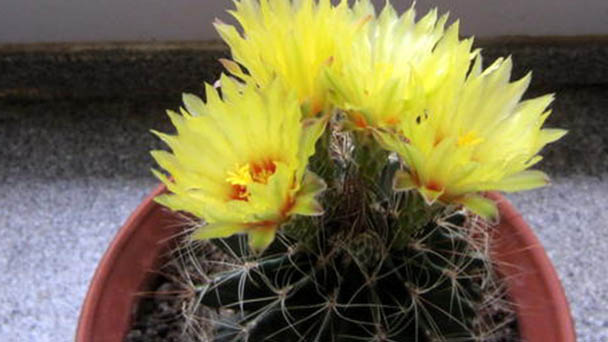
Echinopsis Tubiflora is native to the arid grasslands of Argentina and southern Brazil. It is a subtropical succulent. It requires a sunny environment. It is drought-resistant, slightly shade resistant, avoids strong direct sunlight, afraid of water, not cold. Echinopsis Tubiflora is a common indoor potted cactus plant. It is also a good rootstock for grafting other prickly pear. It also can improve indoor air quality, have the effect that purifies air. It can absorb sulfur dioxide, hydrogen chloride, carbon monoxide, carbon dioxide and nitrogen oxide.
Echinopsis Tubiflora Picture
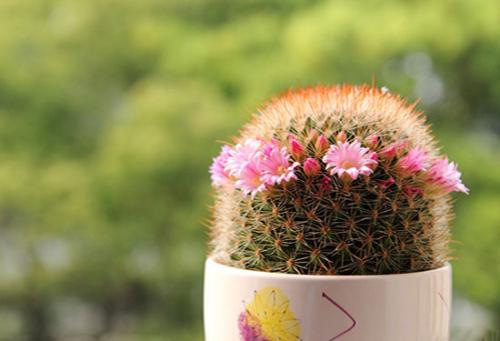
Characteristics of Echinopsis Tubiflora
Echinopsis tubiflora is a succulent perennial herb. Plants are solitary or clustered. The young plant is spherical, the old plant is cylindric, 30-75 cm high, 12-15 cm in diameter. The sphere is dark green, with 11-12 edges, long spines on the edges, black thorns, cone-shaped, 1-1.5 cm long. Flowers are white, large trumpet - shaped, 24 cm long, 10 cm in diameter, open at night, wilting next morning, flowering May - July.
Echinopsis Tubiflora Propagation
Echinopsis Tubiflora Propagation from Seed
Once the fruits of echinopsis tubiflora are ripe, the flesh and impurities can be removed and the seeds taken out. The seeds can be washed clean with water. After a little airing, the seeds can be seeded and reseeded. Before sowing, a seedbed should be prepared; General seed less usable large earthenware flower pot, seed much usable and old wooden box is changed into wooden box bed. No matter what kind of seedbed should be on the mat at the bottom of the tiles, Echinopsis Tubiflora put a layer of the palm, then rinse thoroughly clean river sand, with the method of high temperature disinfection disinfection treatment, then tile leveling compaction on the palm, and then sow the seeds on the sand, and sand covering seed, adopt the method of basin, the river sand wet, or with a fine mesh watering can, for the water mist sand wet. The bed is covered with white glass or covered with plastic film, and then placed in a warm and shaded place, with the temperature controlled at 20-22℃. If the shade is too cold, cover the glass with a newspaper layer and move the bed to a sunny place to keep the bed warm. Prickly pear seeds in the appropriate temperature conditions germinate faster, generally after 15-20 days of physiological and biochemical development, the Echinopsis Tubiflora embryo will break through the ground. After the seedlings, you should use wood to pad the glass, so as to facilitate ventilation. The humidity in the bed should not be too large. If the humidity is too large, you can move the seedlings to ventilate in the dry place, otherwise the seedling root is easy to rot.
The seedlings of Echinopsis Tubiflora are very delicate. You can spray the inner wall of the bed or the soil inside the bed with a sprayer in the morning and evening. You can spray water once a day to moisten the substrate. If the seedling period to rot root phenomenon should take firm measures, promptly remove the rotten plants. If there is a trend of pathological spread, 50% of carbapenems can be effectively sprayed in an 800-1000 times aqueous solution, or robust seedlings can be transplanted into other clean pots or wooden boxes. The transplanted soil can be prepared in 4 parts of yellow-sand soil, 3 parts of sandy vegetable soil, 2 parts of forest leaf rot soil and 1 part of calcareous soil.However, these substrates must be subjected to high temperature, or strict disinfection by ultraviolet light before they can be used. Seedling transplantation and cultivation should not be too deep, let alone damage the young ball. The seedling can be raised with bamboo chopsticks, and then planted in the soft and breathable culture soil. Water spraying should not be too much, and the substrate can be used to dry it.
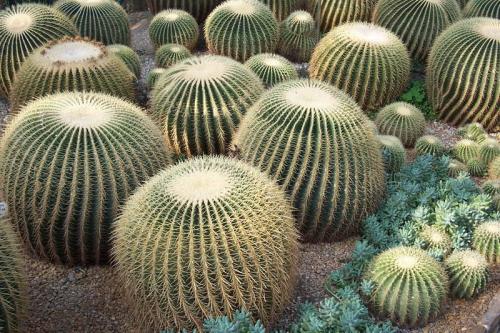
Echinopsis Tubiflora Propagation from Cutting
Echinopsis Tubiflora has a strong germination ability, with plants growing for 3-4 years. Generally, several or even dozens of tubiflora can germinate every year. These small balls absorb nutrients from the mother and grow rapidly. Generally, after a period of growth, when the diameter of the small balls grows to 2.0-2.5cm, Echinopsis Tubiflora can be cut off from the mother as cuttings for propagation. Cuttage seedbed can choose large-sized earthenware pot, substrate can be used plain sand soil 4, sandy garden soil 3, forest leaf soil 1, calcareous soil 2 preparation, match after strict high temperature disinfection, when going to bed, first with a few cantile-tile shed cover pot bottom hole, then with broken charcoal blocks to fill the bottom, do a good job of drainage layer, and then fill culture soil.In the selection of cutting, it is best to choose in sunny days, avoid rainy days when the air humidity is large.Small balls cut, the incision should be daubed with a small amount of sulfur powder, or lime, because coated with these two substances, have a disinfection effect, prevent bacterial infection, prevent decay. Then put it upside down in the sun, air drying 1-2 days, or placed in a cool and dry place, after the incision dry shrinkage can be cuttings.Cuttings, cuttings should not be too deep into the soil, as long as the stability can not fall.Bamboo sticks can be used to set up pillars if necessary to increase the effect of auxiliary fixation. Cactus cuttings can spray surface water, so that the substrate surface is wet, ten days and half a month after the water spray through.Other time, 2-3 times a day to the small ball mist spray, reduces the plant water evaporation. Generally after 20-25 days of physiological and biochemical development, the base of the small ball can grow life roots, at this time to strengthen sunlight, apply some thin organic liquid fertilizer, and promote the robust growth of seedlings.
Echinopsis Tubiflora Propagation from Grafting
The grafting process of Echinopsis Tubiflora is also relatively simple, and the technique is easy to master. It is widely used in horticulture and family cultivation. Grafting rootstock available leaf cactus, this rootstock germination strong, generally shows shrubby growth. Before grafting, erect cultivation with a suitable size of earthenware pot, after surviving on its stem, the top of the branch grafting. The scion selects healthy young pellets with a diameter of 2.0-2.5 cm. During grafting, the top of rootstock was cut into a cone to expose the central vascular east, and the base of the young ball was cut into a "∧" shape with a sharp knife to expose the central vascular east.In this way, the two vascular rings of rootstock and scion are exposed in the form of concentric circles. As long as the two are connected correctly and the two vascular rings coincide, the grafting can survive. This method is not only solid grafting, and the fastest cutting healing, the best growth after survival. Then according to the same method, the other branches of the rootstock, one by one grafting, after surviving full tree small ball, its form is very spectacular and beautiful.
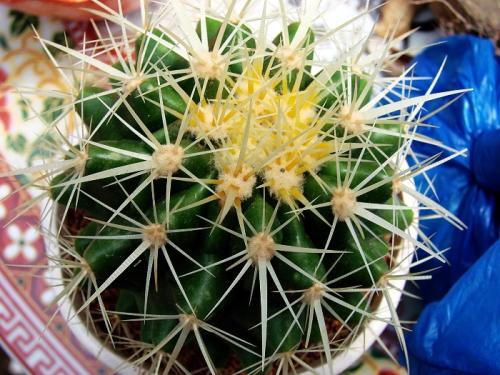
Check our article on 35 Most Common House Plants with Pictures & Care Guide
How to Care for Echinopsis Tubiflora Indoors
Echinopsis Tubiflora is a perennial plant in the cactus family Echinopsis Tubiflora, also known as the grass bulb. Echinopsis Tubiflora is not toxic and can be kept in your home without causing harm to humans. Keeping Echinopsis Tubiflora in the bedroom for viewing can help relieve visual fatigue, as well as relax and relieve mental stress.
Echinopsis Tubiflora is native to South America and generally grows in the desert. It likes dry, tolerant to drought. The main growing season of Echinopsis Tubiflora is summer, which is also its peak bloom period.
Pay attention to Echinopsis Tubiflora maintaining indoors. Echinopsis Tubiflora has fine hard thorns, so it is necessary to do a good job of prevention. If you have small children or pets, don't place Echinopsis Tubiflora in a lower part of your home. Try to keep Echinopsis Tubiflora out of reach of your child, such as on a counter or windowsill, to avoid the hard stab of Echinopsis Tubiflora.
Echinopsis Tubiflora prefers a dry, airy climate. Keep it in your bedroom with Windows open frequently to keep indoor air circulating. Otherwise, Echinopsis Tubiflora will not grow well. Echinopsis Tubiflora likes light, and during its growth, it needs to be moved to a well-lit outdoor location. In sufficient dry conditions, Echinopsis Tubiflora can photosynthesize and grow better.
Echinopsis Tubiflora nutrient requirement is not high, but is afraid of waterlogging. So when we prepare the soil, it is mainly based on ventilation and drainage performance, and appropriately supplemented. Therefore, we mainly use granular soil and nutrient soil for conservation. If you have a friend who can get directly to the pine, needle soil is also possible.
If there are children in the family, we must pay special attention to them. If we usually put Echinopsis Tubiflora at a lower place, it is easy to get children hurt. So if it is placed in the indoor maintenance, we can choose to put it on the windowsill or on the display stage and the desk at home.
Read More: How to Care for Echinopsis Tubiflora
Echinopsis Tubiflora Pest Control
Echinopsis tubiflora is vulnerable to scale insects during its growing period.
Control method: the injured Echinopsis Tubiflora is not much, can use bamboo slices to scrape off or brush to brush off adult insects, or use forceps to tweeze out insect bodies to kill, but do not damage the leaf surface. Also we can combine to clip the part with much insect to cut off to burn.(2) in the summer high temperature and wet season, strengthen ventilation, digging system watering, reduce air humidity, keep appropriate dry. In the first nymphal incubation period with water or neutral washing powder 70-100 times the liquid for washing pests. During the initial nymphal stage, spray 40% oxydimethoate 1000x liquid or 80-100x liquid of scale mites, spray once every 7 days and continuously spray 2-3 times. During the harm stage, 15% Tiexuke granule can be buried in the soil of the basin, and 1-2 grams per basin (15 cm in diameter) can be buried.3% carbofuran can also be buried, 3 g per basin (15 cm in diameter). It is also possible to irrigate the rhizosphere 2000 times with 40% dimethoate emulsion, 50-100ml per basin (15cm in diameter).
Echinopsis Tubiflora Uses
Echinopsis Tubiflora is a common indoor potted cactus. Echinopsis Tubiflora has a peculiar shape, beautiful flowers with large shapes, white and elegant colors, and the habit is very strong, fast growing, easy to blossom, easy to bear seeds, easy to reproduce, so that cultivation is very common. Echinopsis Tubiflora is a popular, suitable for family cultivation of prickly pear, but also grafting other prickly pear good rootstock.
Echinopsis Tubiflora is the acid metabolism pathway of Sepium. The stomata of prickly pear closes during the day and opens at night to absorb carbon dioxide and release oxygen, which can improve indoor air quality and play a role in purifying the air. It can absorb sulfur dioxide, hydrogen chloride, carbon monoxide, carbon dioxide and nitrogen oxide.
Echinopsis Tubiflora is a strange, spherical plant with dark green colors and white flowers. Keeping it at home can decorate the room, beautify the environment. Echinopsis Tubiflora can also resist radiation, produce oxygen, absorb harmful indoor gases and dust, and improve indoor air quality, which is beneficial to human health.
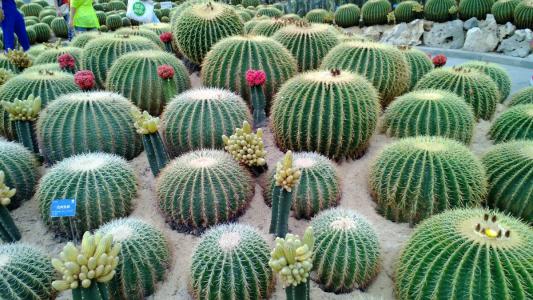
Latest Updated
- Benefits of Bugleweed - 7 Science-backed Health Benefits
- Bugleweed Dangers & Side Effects - Is It Poisonous?
- How to Plant Evergreen Trees - What You Should Know
- When to Plant Evergreens - Grow Guide for Evergreen Trees
- 12 Wonderful Evergreen Shrubs for Your Garden
- 12 Popular Evergreen Plants with Pictures for Beginners
- When And How To Prune A Lilac Bush Like a Pro
- How to Grow & Care for Lilac Vine (Hardenbergia Violacea)
- Japanese Lilac Tree (Syringa Reticulata) Care & Propagation Guide
- Shumard Oak Pros and Cons - What to Know
Popular Articles
- Winter maintenance of Antirrhinum Majus
- How to Grow Terminalia Mantaly Tree
- How to Grow and Care for Crossostephium Chinense
- How to grow Antirrhinum Majus in spring
- Peristeria Elata (Dove Orchid) Profile: Info & Care Guide
- Underwatered Snake Plant (Sansevieria Trifasciata) - Signs And How To Fix
- How to Care for Brazilian Jasmine Plant (Mandevilla Sanderi)
- How to Grow & Care for Graptopetalum Purple Delight in Summer
- Rosa Chinensis (China Rose): Plant Growing & Care Tips
- How to Care for Baby Sun Rose (Aptenia Cordifolia)